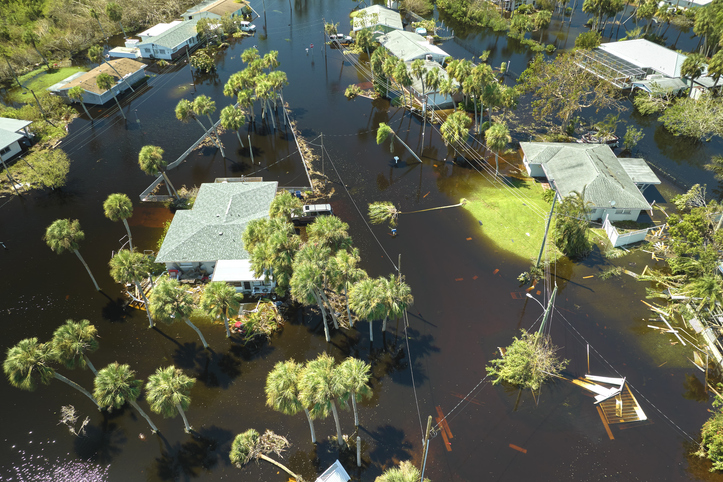Sean O’Rourke | May 15, 2025 | Personal Injury

When you hear about hurricanes on the news, reporters often mention their “category.” But what do these numbers actually mean?
Hurricanes are classified using the Saffir-Simpson Hurricane Wind Scale, which assigns a 1-to-5 rating based on a hurricane’s wind speed. This scale was created to help predict property damage.
In 1971, engineer Herbert Saffir and Robert Simpson, a director of the National Hurricane Center, developed this scale. Saffir was working on a United Nations project studying how to build affordable houses in hurricane-prone areas when he realized there wasn’t a simple way to describe hurricane intensity.
This Saffir-Simpson Hurricane Wind Scale measures wind speed, classifying hurricanes into:
Category 1 Hurricanes: Dangerous but Manageable
Category 1 hurricanes have wind speeds of 74 to 95 mph. These are the weakest hurricanes, but they are still dangerous. They produce “very dangerous winds” that damage roofs, siding, and gutters. These winds also cause large branches to break and might also cause some shallow-rooted trees to fall.
Power outages from Category 1 hurricanes might last a few days. And though less destructive than stronger hurricanes, Category 1 storms still require serious preparation.
Category 2 Hurricanes: Extensive Damage
Category 2 hurricanes have wind speeds of 96-110 mph. They create “extremely dangerous winds,” causing extensive damage. Well-built houses may suffer major siding and roof damage, and many shallow-rooted trees will be uprooted, blocking roads.
Additionally, power outages can continue for several days to weeks, and the destruction becomes much more widespread at this level.
Category 3 Hurricanes: The Major Storm Threshold
Category 3 hurricanes bring wind speeds of 111-129 mph. This is where hurricanes start being called “major hurricanes.” They cause “devastating damage,” where well-built homes may lose parts of their roofs or exterior walls. Also, many trees snap or are uprooted.
Electricity and water remain unavailable for extended periods, at which point the risk to life becomes much more serious.
Category 4 Hurricanes: Catastrophic Impact
Category 4 hurricanes have wind speeds between 130 and 156 mph. At this strength, “catastrophic damage will occur.”
Even well-built homes can suffer severe damage, with many of them losing roofs and possibly some exterior walls. Many trees will snap or be uprooted, and power poles may fall. As a result, many areas hit by a Category 4 hurricane will be unlivable for weeks or months.
Hurricane Harvey, which hit Texas in 2017, was a Category 4 storm that caused $158.8 billion in damage and flooded or destroyed more than 200,000 homes.
Category 5 Hurricanes: Maximum Destruction
Category 5 hurricanes, the strongest on the scale, have wind speeds of 157 mph or higher. These cause “catastrophic damage.”
Many homes will be completely destroyed, and fallen power poles and trees will isolate neighborhoods. Power outages last for weeks to months, and areas hit by a Category 5 storm often become unlivable for extended periods.
What Hurricane Categories Don’t Tell You
While the Saffir-Simpson scale is one way to identify a hurricane’s strength, it doesn’t provide a complete picture. One noted issue with this scale is that it only measures wind speed and not other dangers associated with hurricanes.
Hurricane Katrina is a good example. It made landfall in Louisiana as a Category 3 storm due to its wind speed, but its storm surge reached over 30 feet in some areas, which is the storm surge of a Category 5 storm.
The scale also doesn’t consider a hurricane’s size or speed. A slow-moving hurricane can cause more damage than a faster one of the same category simply because it stays longer over an area.
Staying Safe During Hurricane Season
When a hurricane is approaching:
- Monitor local weather reports
- Have an evacuation plan ready
- Prepare an emergency kit in case of injuries
- Avoid driving during the storm, as car accidents are more likely to happen
- Stay away from windows, as a blow from fast-moving debris can be fatal
For Houston residents, understanding hurricane categories could save lives.
Use Knowledge of Hurricane Categories in Your Storm Safety Preparations
While the category system is one way to understand a storm’s intensity, it’s just one factor to consider when preparing for these powerful forces of nature. Remember that water, not wind, often causes the most hurricane damage.
Contact the Personal Injury Attorneys In Houston, TX at Simon & O’Rourke Car Accident & Personal Injury Lawyers for Legal Assistance Today
For more information, please get in touch with the Houston personal injury attorneys at Simon & O’Rourke Car Accident & Personal Injury Lawyers at our nearest location to schedule a free consultation today.
Simon & O’Rourke Car Accident & Personal Injury Lawyers
440 Louisiana St Suite 1115, Houston, TX 77002
(281) 667-4081
About The Author

Sean O’Rourke earned his law degree from Southern Methodist University School of Law and is licensed to practice in Texas. He frequently assists clients with their legal needs in Houston, with a focus on personal injury cases, especially those involving motor vehicle accidents (such as cars, commercial trucks, 18-wheelers, & motorcycles). Click here to view some of the amazing case results that Sean has successfully handled.
Location: Houston, TX
